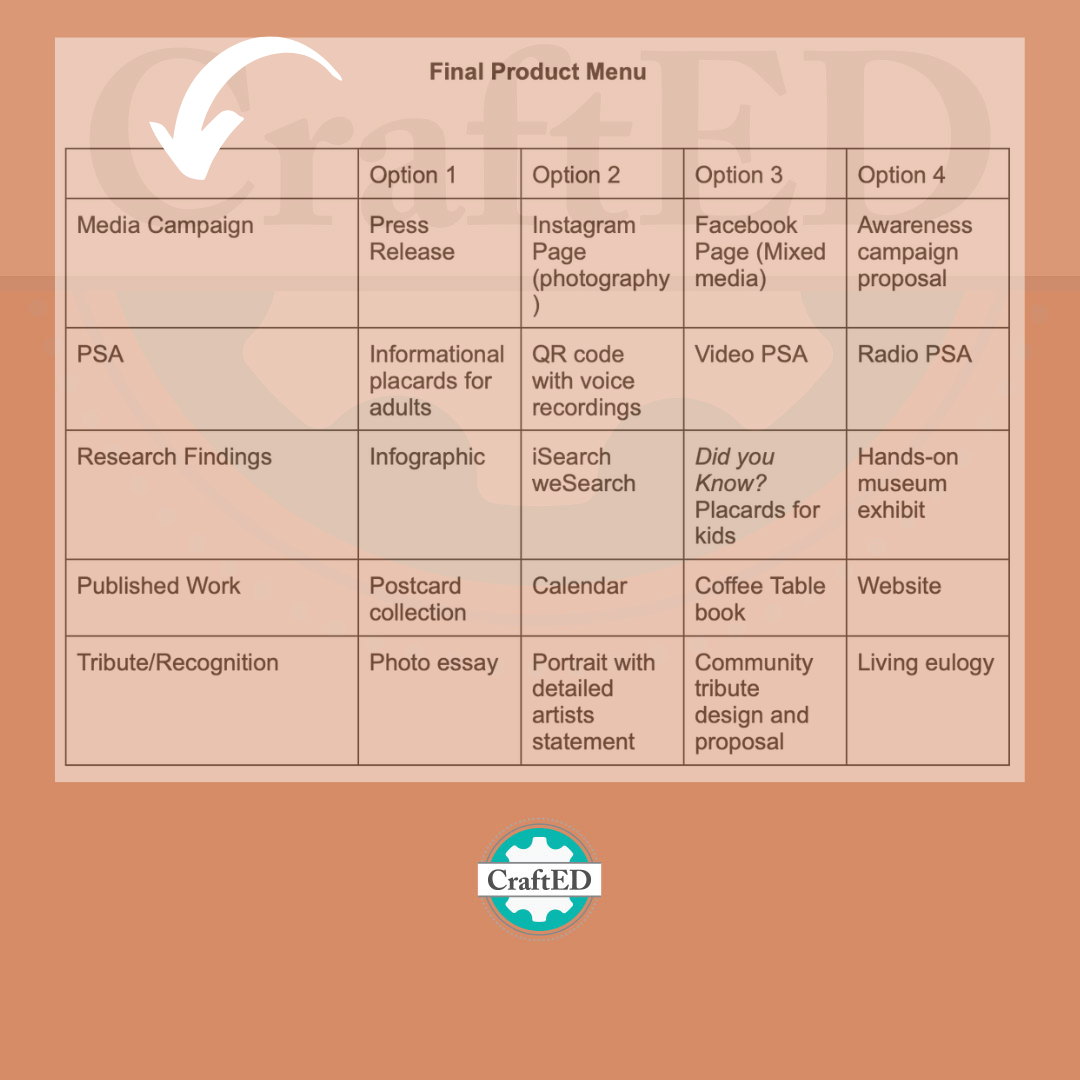
Real Talk: “Voice and choice” might be the most overused and misunderstood phrase in PBL. In my experience, educators tend to use this phrase as a way to make PBL appeal to the masses; as a result, students, teachers, parents and school leaders are left feeling bewildered, frustrated and unsuccessful with project-based learning. Let me take a hot second to break down what “Voice and Choice in PBL” actually means.
Student Voice in PBL
We can ask for student input in any of the following ways:
- Student interest feedback- At the beginning of your school year, quarter, semester, new unit go ahead and ask students what they would like to explore, within the guidelines of your content. Make it easy on yourself and do this in the format of a Google Form survey. Remember that students don’t know what they don’t know, so you may need to provide some background context or engage in some inquiry exploration. The Question Formulation Technique is my favorite strategy for getting students to develop some awesome questions for what they would like to learn about.
- Student project tune- Ask for student input on a project design before you run it. Over a decade ago I participated in a project tune with my colleagues and students and I still remember what a powerful experience it was for student voice!
- Group selection- Before you launch your next project ask students to reflect on which of their peers they would like to work with AND WHY.
- Student reflection- Asking students to reflect on themselves as a learner, along with the PBL process is a best practice of PBL teaching and learning. This is a way to not only provide student voice in PBL, but also a great way to help students develop their agency. You may consider doing Student Led Conferences as an avenue for sharing student reflection with parents, as well.

Student Choice in PBL
As teachers we can provide students some choice in how they show us what they have learned by offering options for final products. In this graphic I show the importance of giving students choices that will showcase the same content and skills, so that we are upholding important assessment practices in PBL.

*PBL Pro Tip: Take some time to calibrate with your colleagues on what this feels like, looks like, sounds like for your learning community.
Learn More
Here are a few other articles and resources “Voice and Choice in PBL”:
- PBL and UDL: Universal Design for ALL learners
- 3 more ideas for increasing student voice and choice in PBL.
- Myths of PBL, including “voice and choice”
- Differentiation in Gold Standard PBL
- Webinar: Tips on differentiating PBL
- e-course: Differentiation in PBL